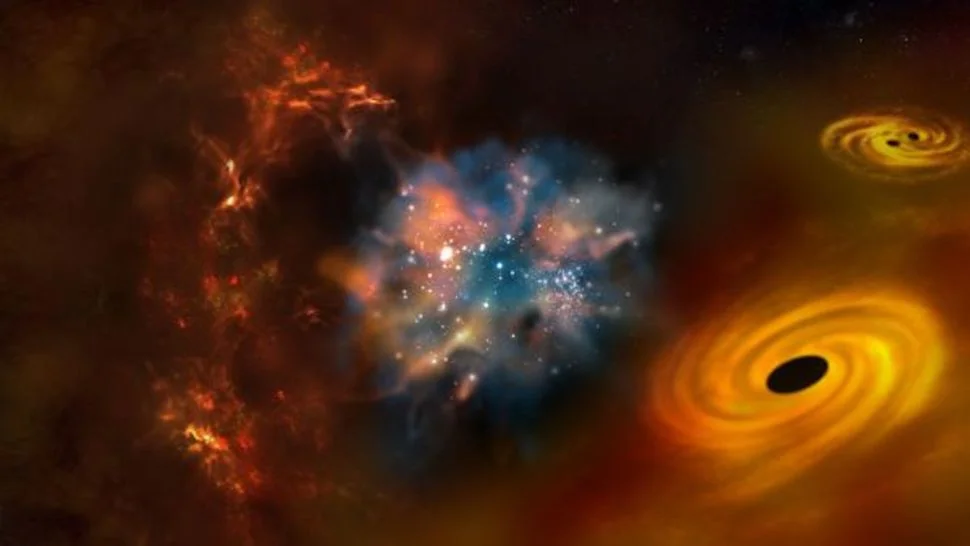The James Webb Space Telescope has released images for the first time showing starlight from two massive galaxies with actively growing black holes known as quasars, observed less than a billion years after the Big Bang.
A study recently published in the journal Nature, showing that black holes have a mass of almost a billion times that of the Sun, and the host galaxy is almost a hundred times more massive, a ratio similar to that seen in the new universe. . The powerful combination of the Subaru Telescope and JWST has opened up a new way to study the distant universe.
The existence of such massive black holes in the distant universe has raised more questions than answers for astrophysicists. How did these black holes get so big when the universe was so young? Even more surprising is that observations in the local universe show a clear link between the mass of supermassive black holes and the much larger galaxies in which they reside. Galaxies and black holes are completely different sizes, so which came first, black holes or galaxies? It’s a chicken-egg problem on a cosmic scale.
3.6 µm image of JWST NIRCam HSC J2236+0032. A zoomed-in image, an image of the quasar, and an image of the main galaxy (left to right) after the quasar light has been removed. Each panel displays the scale of the image in light years. Contributors: Ding, Onoe, Silverman and others.
Studying the relationship between main galaxies and black holes in the early universe allows scientists to observe their formation and see how they relate to each other.
While quasars are bright, their host galaxies are dim, making it difficult for researchers to detect the galaxy’s faint light, especially in the glow of a quasar at great distances. Before JWST, the Hubble Space Telescope was able to detect parent galaxies of bright quasars when the age of the universe was a little less than 3 billion years, but no less.
Also read – Scientist proposes a roadmap for exploiting the resources of the Solar System
JWST’s superior sensitivity and ultra-sharp infrared images eventually allowed the researchers to take these studies back to when quasars and galaxies first formed. Just months after JWST began regular operations, the team observed at 6.40 and 6.34 redshifts of two quasars, HSC J2236+0032 and HSC J2255+0251, when the universe was about 860 million years old.
The two quasars were discovered by the Subaru 8.2-metre Deep Research Program at the summit of Maunakea in Hawaii. The relatively low luminosities of these quasars have made them primary targets for measuring the properties of parent galaxies, and successful detection of parent galaxies is the earliest time to date that starlight has been detected in a quasar.
The two quasars were imaged with the JWST NIRCam instrument at infrared wavelengths of 3.56 and 1.50 microns, and the host galaxies became apparent after careful modeling and removal of the accumulated black hole reflections. The host galaxy’s stellar signature was also seen in the NIRSPEC JWST spectrum for J2236+0032, further confirming the detection of the host galaxy.
Photometry analysis of the main galaxy revealed that these two quasars of the main galaxy are as massive as 130 and 34 billion times the mass of the Sun, respectively. NIRSPEC measurements of the velocity of turbulent gas around quasars show that the black holes that feed them are also massive, between 1.4 and 0.2 billion times the mass of the Sun. The ratio of the mass of the black hole to the mass of the host galaxy is similar to that of galaxies in the recent past; This suggests that the connection between black holes and their hosts existed as early as 860 million years after the Big Bang.
Ding, Silverman, Onue, and colleagues will continue this work with a larger sample using the planned JWST cycle 1 observations, further constraining models for the co-evolution of black holes and galaxies. The team recently learned that JWST has been given additional time to further study its host galaxy, J2236+0032, in the next cycle. Source
Also read – Scientists used 12 telescopes to study a pulsar














